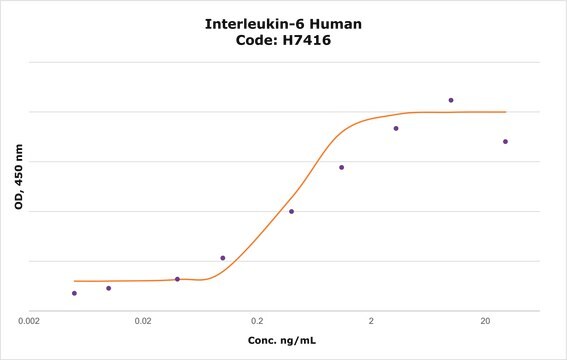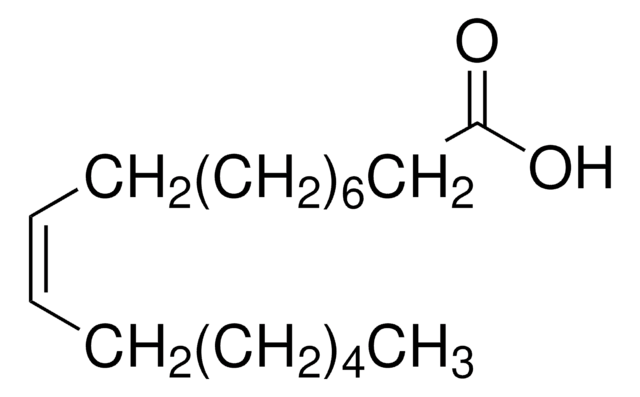H6541
Oncostatin M human
OSM, recombinant, expressed in HEK 293 cells, HumanKine®, suitable for cell culture
Sinónimos:
OSM
About This Item
Productos recomendados
origen biológico
human
Nivel de calidad
recombinante
expressed in HEK 293 cells
Análisis
≥95% (SDS-PAGE)
formulario
lyophilized powder
potencia
≤0.1-1.5 ng/mL EC50
calidad
endotoxin tested
mol peso
dimer 30 kDa (glycosylated)
envase
pkg of 5X10 μg
pkg of 10 μg
técnicas
cell culture | mammalian: suitable
impurezas
≤1 EU/μg
Nº de acceso UniProt
temp. de almacenamiento
−20°C
Información sobre el gen
human ... OSM(5008)
¿Está buscando productos similares? Visita Guía de comparación de productos
Categorías relacionadas
Acciones bioquímicas o fisiológicas
Forma física
Nota de análisis
Información legal
Código de clase de almacenamiento
11 - Combustible Solids
Clase de riesgo para el agua (WGK)
WGK 3
Punto de inflamabilidad (°F)
Not applicable
Punto de inflamabilidad (°C)
Not applicable
Certificados de análisis (COA)
Busque Certificados de análisis (COA) introduciendo el número de lote del producto. Los números de lote se encuentran en la etiqueta del producto después de las palabras «Lot» o «Batch»
¿Ya tiene este producto?
Encuentre la documentación para los productos que ha comprado recientemente en la Biblioteca de documentos.
Nuestro equipo de científicos tiene experiencia en todas las áreas de investigación: Ciencias de la vida, Ciencia de los materiales, Síntesis química, Cromatografía, Analítica y muchas otras.
Póngase en contacto con el Servicio técnico




